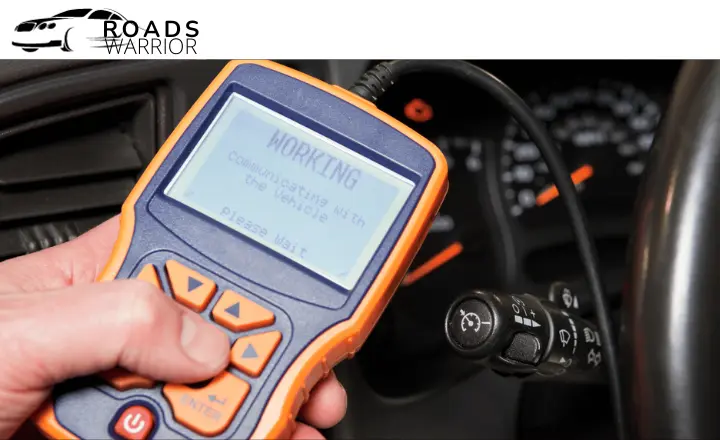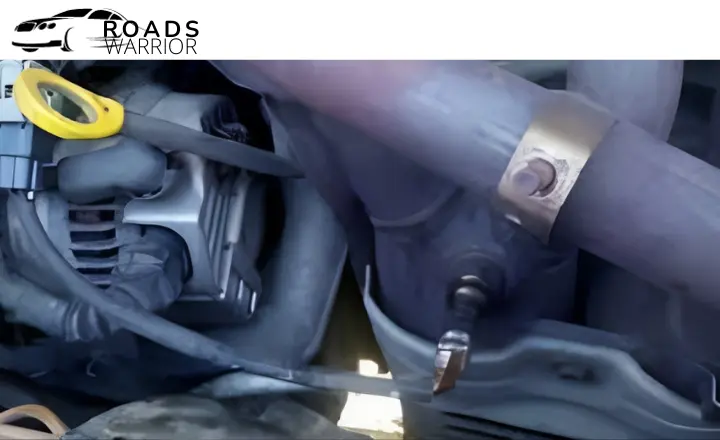The Check Engine Light can be a significant headache for RAV4 owners. When it comes on, it means a problem needs attention. If you’re seeing the P1155 error code, it indicates an issue with the air/fuel sensor heater circuit in your RAV4. This can affect the vehicle’s performance and emissions.
The fix may involve replacing the air/fuel ratio sensor or repairing the wiring harness. Repair costs can vary depending on your area’s problem and labor rates. It’s essential to address this issue promptly to avoid further damage and ensure optimal performance of your RAV4.
When a light comes on in your RAV4, it can be unclear. The maintenance required message is not as urgent as the check engine light. If you figure out the problem and know where to get parts for your RAV4, there’s no need to panic.
When you see the P1155 error message on your Toyota, you should take it seriously. This guide will cover everything about this error code and what you must do.
WHAT THIS P1155 ERROR MEANS
The P1155 code may seem like a minor issue, but it can significantly impact the performance of your RAV4. The air-fuel ratio sensor ensures the engine receives the right air and fuel for optimal combustion. When this sensor malfunctions, it affects fuel efficiency, increases emissions, and reduces overall engine performance.

It’s essential to address this issue promptly to avoid potential damage to other components and ensure your vehicle continues operating at its best.
One exciting aspect of the P1155 code is how modern vehicles use advanced technology to monitor and adjust various parameters for optimal operation constantly. The built-in heater element in the air-fuel ratio sensor highlights how engineers have developed innovative solutions to ensure accurate readings even under different operating conditions.
Understanding these intricate details can help drivers appreciate modern automotive systems’ complexity while emphasizing the importance of regular maintenance and timely diagnostics to keep their vehicles running smoothly.
By addressing the P1155 code and resolving any underlying issues with the air-fuel ratio sensor, drivers can improve their vehicle’s performance and contribute to a cleaner environment by reducing harmful emissions. This serves as a reminder of how individual actions, such as maintaining your car, can positively affect both personal driving experience and environmental sustainability.
POTENTIAL CAUSES
This code only applies to specific models and may not work for other manufacturers. As a result, it’s essential to be cautious when using online articles to diagnose issues unless they specifically mention Toyota. When dealing with the RAV4, potential problems include engine misfires, oxygen sensor malfunctions, and transmission issues. It’s crucial to consult reliable sources or seek professional help to identify and accurately address any trouble codes you encounter.
The following are some possible issues with the RAV4:
- The Air Fuel sensor bank has two sensors. One may be open or shorted, leading to a faulty A F sensor bank with two sensors. 1.
- Another possible issue could be a faulty electrical connection to the A F Sensor Bank 2 Sensor 1, causing it to malfunction.
- The least likely cause of the problem is a Faulty Engine Control Module (ECM), but it should still be considered as a potential factor.
- An open or shorted sensor can disrupt the air-fuel mixture, affecting engine performance and emissions.
- A faulty electrical connection may result in inaccurate readings from the sensor, impacting fuel efficiency and overall engine operation.
- It is essential for technicians to thoroughly diagnose and troubleshoot each potential cause to identify the source of the issue accurately.
HOW TO RESOLVE
If you’re experiencing issues with your RAV4 and suspect it may be related to the air-fuel sensor on bank 2, there are some DIY steps you can take to troubleshoot the problem. Start by inspecting the wiring harness for any signs of damage or broken pins.
This could be a common culprit for sensor malfunctions, and addressing it could potentially resolve the issue. Check the connection to and from the sensor to ensure no loose connections or corrosion affect its functionality.
If everything seems intact after examining the wiring and connections, it may be time to consider replacing the sensor. With access to the right tools and resources, you may be able to do this yourself rather than incurring high costs at a mechanic.
Purchasing a repair manual can be a game-changer for those who want to take on the challenge of fixing their vehicle issues. It provides clear diagrams and step-by-step instructions, making the process easier to understand and execute.
When in doubt, it’s crucial to recognize your limitations and seek professional help. Qualified certified mechanics can more effectively diagnose and repair complex issues, ensuring long-term solutions.
Replacing a sensor may not always resolve the problem, as underlying issues with the ECM could be at play. While rare, this scenario highlights the importance of seeking expert assistance from certified Toyota technicians. Trusting your vehicle in capable hands will ensure its longevity and give you peace of mind knowing it’s in good care.
IS IT SAFE TO DRIVE?
If your RAV4 shows an error code and experiences performance issues, ignoring it could lead to more significant and costly damage. Even if the SUV starts, the potential for jerking, shaking, or a fuel economy drop indicates underlying problems requiring immediate attention.
Considering the long-term impact on the vehicle’s engine and overall reliability is crucial. Addressing the issue promptly prevents further damage and ensures driving safety and peace of mind.
Delaying repairs while the Check Engine Light is illuminated risks overlooking potentially severe faults within the vehicle. With an imbalanced air-fuel mixture affecting performance, proactive measures can safeguard against unforeseen complications. Promptly attending to any issues will help maintain your RAV4’s longevity and performance, reducing future inconvenience and expenses while driving.
ESTIMATED REPAIR COST
The cost of repairing your RAV4 depends on where you take it and the required repairs. When troubleshooting, the average diagnosis labor rate ranges from $75 to $175 at different shops and should take about an hour.
If you decide to replace the sensor yourself, Advance Auto Parts sells them at $172.99, but you may find them cheaper elsewhere. If you have a shop replace the sensor, expect to pay more for the part and another hour for labor.
If the ECM needs replacing, you could spend between $995 and $1,065 for the part, with an average labor cost of $77 to $97. parts may cost around $918 to $968. Remember that prices vary based on where you go for repairs or replacement parts.
EXPERT TIP FOR DEALING WITH ENGINE CODES

Using a Code Scanner to Diagnose RAV4 Issues
A compatible engine code scanner for your RAV4 allows you to easily diagnose issues without visiting a mechanic. Code scanners provide a great way to understand what’s wrong with your vehicle from the comfort of your home garage. This can save you both time and money.
Getting Free Trouble Code Reads
If you don’t want to invest in a scanner, you can get your RAV4’s trouble codes read for free at most auto parts stores. Stores like AutoZone, O’Reilly, and Advance Auto Parts offer free code-reading services.
They will read the codes for you, and the store clerks can advise you on the most likely fix and recommend parts you may need. Being equipped with trouble code information allows you to fix issues yourself potentially.
Understanding the Check Engine Light
When code P1155 triggers in an RAV4, it should cause the Check Engine Light to illuminate solidly. If you notice the Check Engine Light blinking, that indicates a serious issue that requires immediate attention. You should pull over as soon as safely possible if the light is blinking. The blinking signifies an urgent fault in need of service.
NO NEED TO PANIC
Knowing the specific reason behind your Check Engine Light can bring peace of mind and a sense of empowerment. With the P1155 DTC, you have a clearer understanding of the issue, making it easier to address. Whether you tackle the repair yourself or seek professional help, having this knowledge eliminates unnecessary worry and uncertainty.
Delaying necessary repairs for your RAV4 can only lead to more extensive problems. By addressing issues promptly, you’re ensuring that your vehicle remains reliable and provides safe transportation. So, don’t let the fear of dealing with car troubles hold you back- once you know what’s causing the problem, take action to keep your RAV4 in top condition for years to come. you also read more about all Toyota RAV4 models trim and configuration.
Conclusion
The P1155 error code in the Toyota RAV4 can be a frustrating issue for owners, but with proper diagnosis and repair, it can be effectively resolved. By following the recommended steps to troubleshoot and address this error code, drivers can ensure the optimal performance of their vehicles.
Whether through checking the oxygen sensor, inspecting the wiring, or consulting a qualified mechanic, it is important to take prompt action to address this issue. Staying informed about potential causes and solutions for the P1155 error code can help prevent future occurrences and maintain the vehicle’s overall health.
